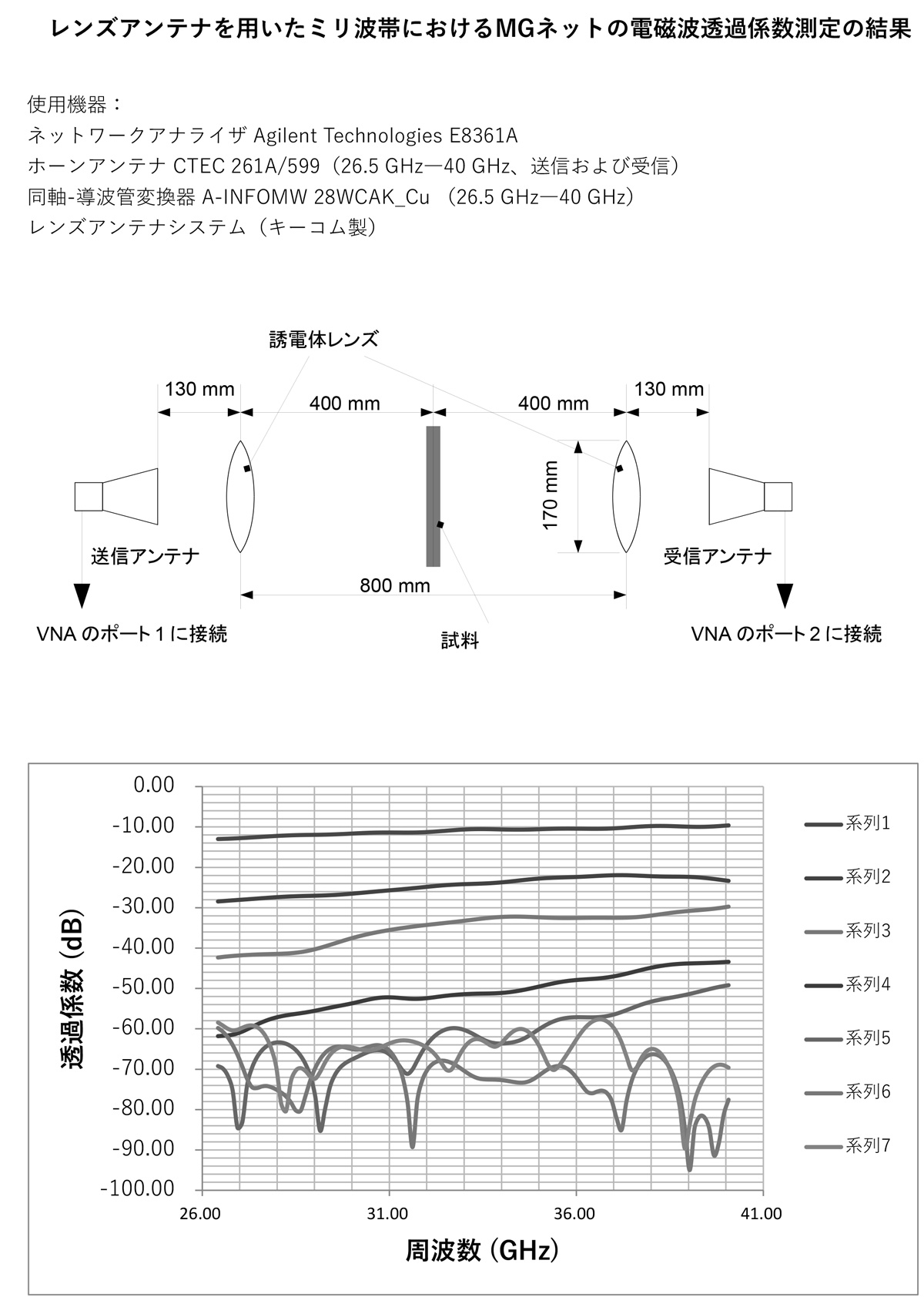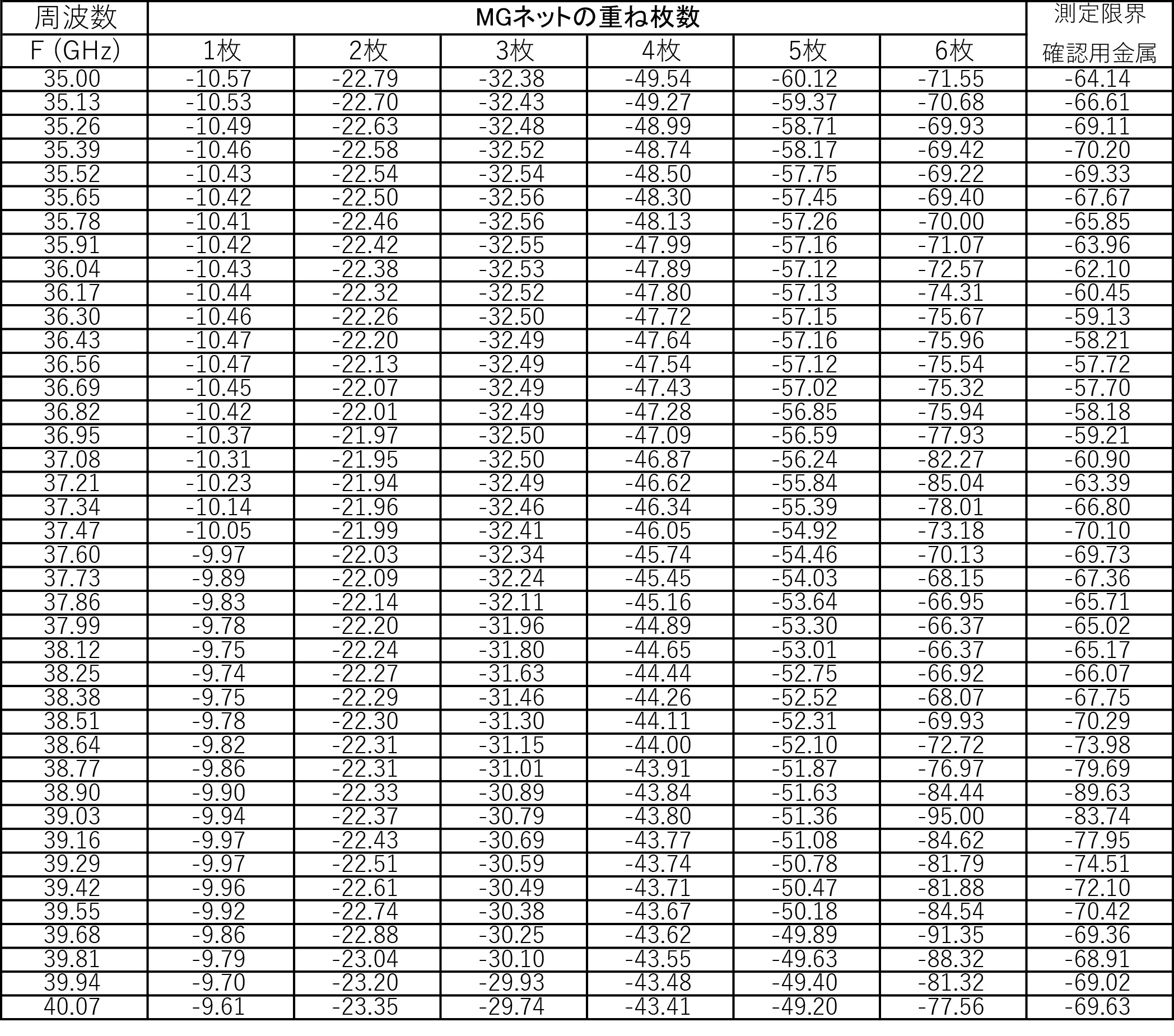MG Net performance and properties
KEC method electric field shielding data
This is the electric field shielding data (in dB: decibels) when 1 to 4 sheets of MGnet are stacked for each frequency.※4The shielding performance is 99% at 40dB and 99.9%at 60dB.If you want to completely block your mobile phone from receiving signals, you will need a shielding performance of 40dB or more, so please use MGnet triple or more.
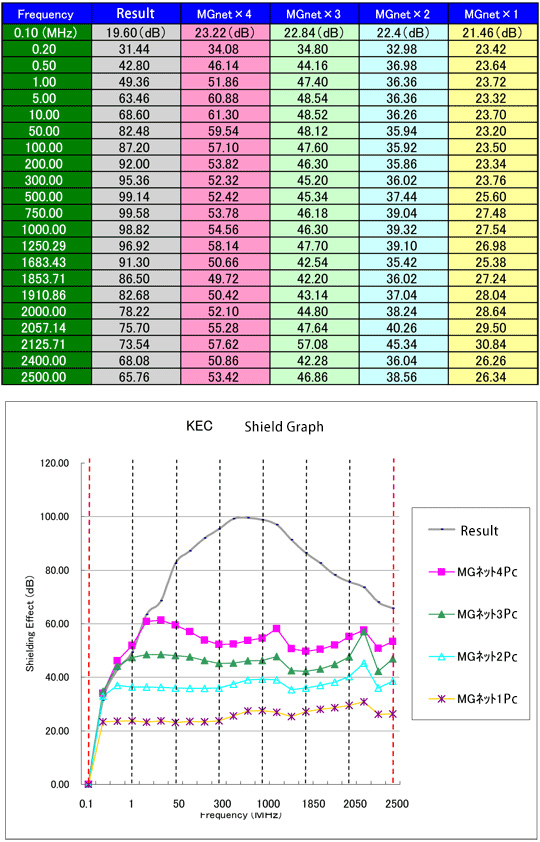
▲Comparison of shielding performance against near-field electric fields by overlapping MGnets (KEC method): Measurement Limit indicates the measurement limit value. It can be seen that overlapping MGnets improves shielding performance against high-frequency electromagnetic waves from 1 MHz to 2.5 GHz from 20 dB to 60 dB.
KEC method for measuring electric field shielding
Comparison of electromagnetic shielding performance by overlapping MGnets
A comparison was made of the electromagnetic shielding performance of overlapping MGnets. The shielding performance against near electric fields was measured using the KEC method as shown on the right. The results are shown in the table and graph above. These results show that overlapping MGnets improves shielding performance against high frequency electromagnetic waves from 1MHz to 2.5GHz.Measurement method for shielding effectiveness against near electric fields using the KEC method (Figure 1)
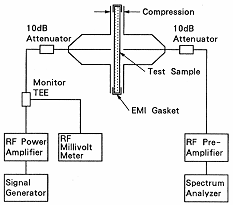
(Figure 1)
Free space method electric field shielding data
This is the electric field shielding data (dB: decibel unit) when 1 to 6 sheets of MGnet are stacked for each frequency. Shielding performance evaluation of MGnet in each frequency band was carried out by HVS Technologies, Inc. (a specialized institution for electromagnetic absorption shielding materials and test equipment attached to the Electro-Acoustic Research Center) in the United States. As a result, electromagnetic wave shielding performance was confirmed with a shielding rate of 30 to 40 dB or more at frequencies of 0.045 GHz to 1.4 GHz, and a shielding rate of 20 to 40 dB or more at frequencies of 7.75 GHz to 13.0 GHz. Details are shown in Table 2.
| Test Date | December 10, 1997 |
|---|---|
| Measurement Facility | HVS Technologies, Inc.(Electromagnetic Absorption Shielding Materials and Testing Equipment Specialty Center of the Electroacoustic Research Center, USA) |
| Measurer | Prof. Vijay K. Varadan(Center for Electroacoustic Materials and Device Engineering, Pennsylvania State University, USA) |
| Electromagnetic wave shielding material used | MGnet |
| Measuring Equipment | HVS Free Space Microwave Measurement System |
| How to Measure | Measurement of electromagnetic wave absorption rate and transmission attenuation rate of MGnet using HVS Free Space Microwave Measurement System |
| Measurement results |
|
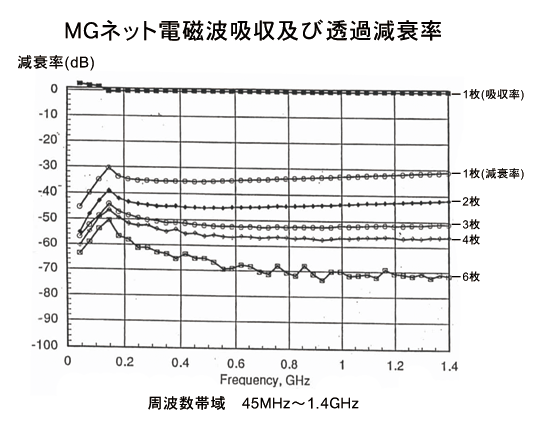
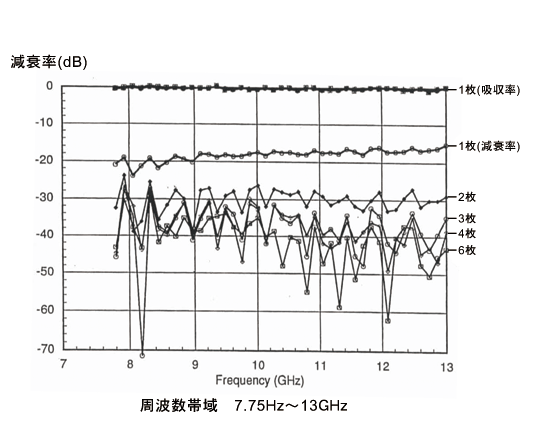
Millimeter wave shielding test data ※Click to enlarge
Our CompanyMGInitiatives to prevent metal allergies in net products

- 1.MGnet
- 2.General electromagnetic shielding materials
- A:titanium
- B:Gold, Silver, Platinum
- C:Zinc, manganese, copper
- D:Nickel-Cobalt-Chromium
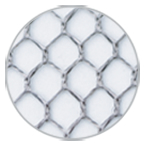
Metal allergy is a condition in which the skin reacts to metals and chloride ions contained in sweat, causing a rash. Silver is a safe metal that is extremely unlikely to cause allergic reactions. Most common electromagnetic shielding materials use inexpensive metal plating such as nickel. Nickel dissolves more easily than other metals when it comes into direct contact with the skin, and if you sweat, it dissolves even more easily due to the action of chloride ions in sweat, so care must be taken.
Our "MGnet" products are designed with safety and intended use in mind, and are coated with silver to minimize the risk of metal allergies. Also, unlike general products that have electromagnetic shielding material coated on the fabric, "MGnet" products are silver coated at the fiber level, making them resistant to abrasion and peeling of the coating material and durable.
Conductivity and other physical properties
The table below shows the conductivity (surface resistance) and other physical properties. It also compares the physical properties after washing using each washing method.
| Initial (longitudinal/latitudinal) | Washing JIS L0217 103 method | Washing JIS 1042 Berklen method DC5 (warp/weft) | remarks | ||
|---|---|---|---|---|---|
| HL5(background) | HL10(background) | ||||
| Surface Resistance Value(Ω/10×10cm) | 1.4/3.0 | 1.6/4.0 | 2.4/3.3 | 2.2/4.8 | refer to the following |
| Shrinkage rate(%) | - | 3~8/0 | 8~14/-13~-6 | 1/3 | + is contraction, - is expansion |
| Tensile strength(kgf) | 3.1/2.2 | - | - | - | 2.5cmwidth |
| Tear strength(kgf) | 0.2/0.2 | - | - | - | Single Tongue Method |
| Surface resistance measurement method (measurement conditions) |
|---|
|
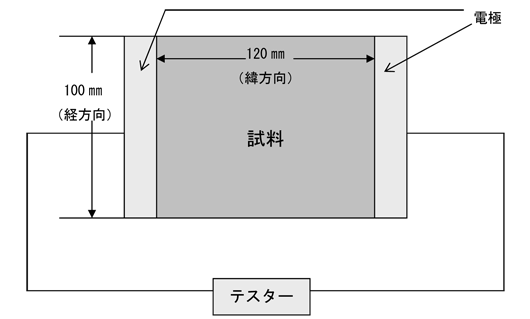
Safety Instructions
Please be aware of the following items to use MGnet safely. Please read them carefully and observe the warnings and precautions before using MGnet.
caveat This is a warning that may result in death or serious injury.
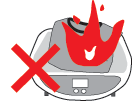
Do not place the EMS pad on an induction cooker while it is in use, as this may cause the pad to catch fire.

Do not heat in a microwave oven. Both the silver fiber and the EMS pads may catch fire.
Note This indicates a note that may result in injury or only property damage.
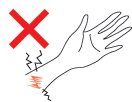
If you have metal allergies, do not touch the metal directly to your skin as it may cause itching or a rash.

Do not immerse the RF protection vest or EMS pad in seawater or hot spring water. This may cause a decrease in performance. If the EMS pad gets wet, wipe it with a dry cloth.


